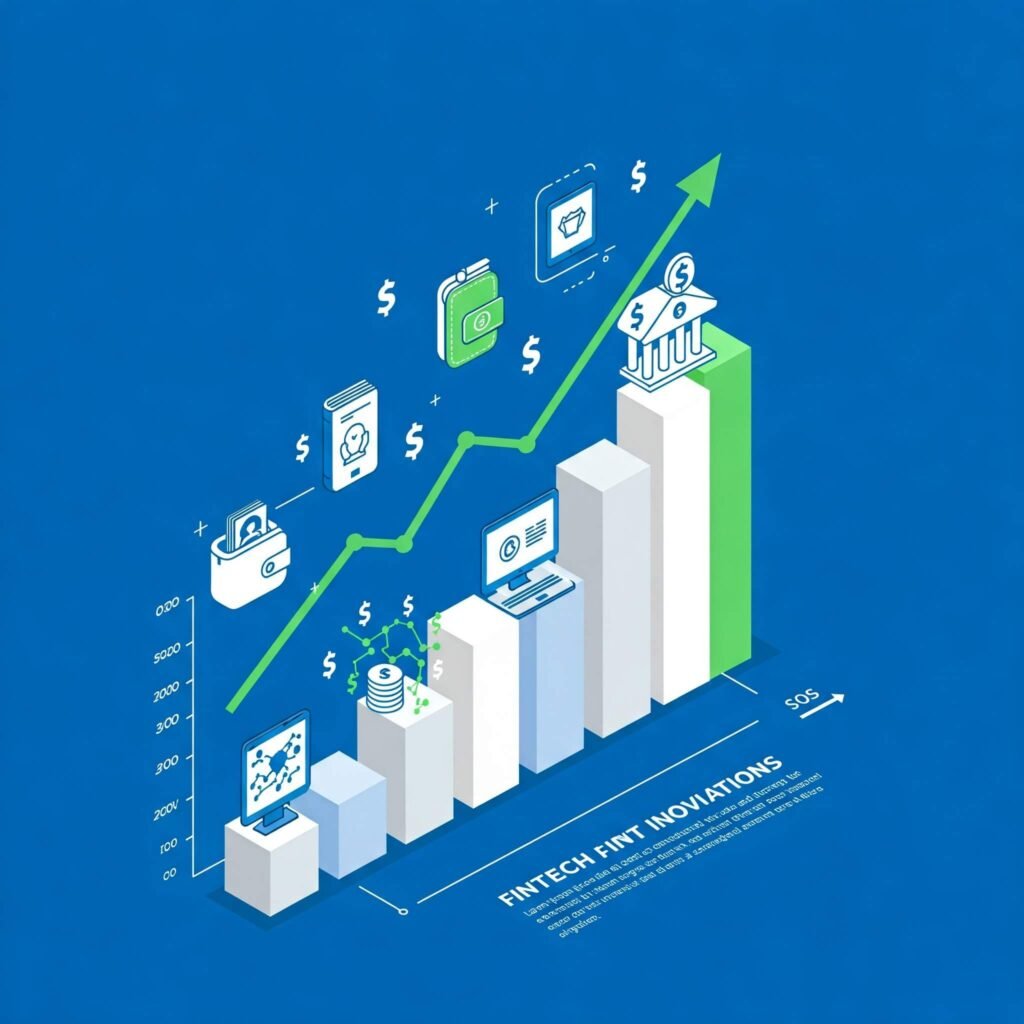Fintech innovations are reshaping the banking landscape, making financial services faster, more accessible, and user-friendly. From mobile apps to blockchain, these advancements are changing how we manage money. This blog dives into the transformative power of financial technology, offering insights, examples, and actionable takeaways for anyone curious about the future of banking.
Why Fintech Innovations Matter in Modern Banking
Fintech innovations are more than just buzzwords—they’re revolutionizing how we interact with money. Traditional banking, with its long queues and paperwork, is giving way to digital solutions that prioritize convenience and efficiency. According to a Statista report, the global fintech market is projected to reach $1.15 trillion by 2030, driven by consumer demand for seamless financial services.

Key Fintech Innovations Transforming Banking
Mobile Payments: Banking at Your Fingertips
Mobile payment platforms like PayPal, Venmo, and Apple Pay have made transactions effortless. Fintech innovations in mobile payments allow users to send money, pay bills, or shop online with a tap. For example, Square empowers small businesses to accept card payments anywhere, leveling the playing field.
- Why it matters: Instant transactions reduce reliance on cash.
- Real-world impact: In 2023, mobile payments accounted for 54% of global e-commerce transactions.

Neobanks: The Rise of Digital-Only Banking
Neobanks like Chime, Revolut, and N26 are fintech-driven banks without physical branches. These platforms offer low fees, real-time budgeting tools, and user-friendly apps. For instance, Chime provides fee-free overdrafts, attracting millions of users seeking affordable banking.
- Benefits: Lower costs, 24/7 access, and personalized insights.
- Takeaway: Compare neobanks to find one that suits your financial goals.
Blockchain and Cryptocurrency: Secure and Transparent Banking
Blockchain technology ensures secure, transparent transactions, while cryptocurrencies like Bitcoin and Ethereum offer decentralized alternatives to traditional money. Fintech innovations in blockchain are also enabling faster cross-border payments. Ripple partners with banks to process international transfers in seconds, slashing costs.
- Why it’s game-changing: Reduces fraud and speeds up global payments.
- Stat: Blockchain-based payments could save banks $27 billion annually by 2030.

AI and Machine Learning: Smarter Banking Solutions
Artificial intelligence (AI) powers personalized banking experiences. Chatbots like Bank of America’s Erica assist customers 24/7, while AI-driven fraud detection protects accounts. Fintech innovations in AI also enable credit scoring for underserved populations, promoting financial inclusion.
- Example: Upstart uses AI to approve loans faster, helping those with limited credit history.
- Takeaway: Embrace AI tools for budgeting or fraud alerts.
How Fintech Innovations Benefit Consumers
Fintech innovations aren’t just for tech enthusiasts—they’re making banking better for everyone. Here’s how:
- Accessibility: Digital platforms bring banking to unbanked regions, with 1.4 billion people still unbanked globally.
- Affordability: Lower fees from neobanks and free payment apps save money.
- Convenience: Manage finances anytime, anywhere with mobile apps.
- Security: Biometrics and blockchain enhance transaction safety.
Challenges of Fintech Innovations in Banking
While fintech innovations offer immense potential, they come with hurdles:
- Regulation: Governments are still catching up with fintech, creating compliance challenges.
- Cybersecurity: Digital platforms must protect against data breaches.
- Adoption: Older generations may resist transitioning to digital banking.
Takeaway: Stay informed about fintech regulations and prioritize platforms with robust security.
The Future of Banking with Fintech Innovations
Fintech innovation are paving the way for a cashless, hyper-connected financial world. Expect more AI-driven personalization, wider blockchain adoption, and seamless global transactions. To stay ahead:
- Explore neobanks for cost-effective banking.
- Use mobile payment apps for quick transactions.
- Learn about blockchain to understand secure finance.
By embracing fintech innovation, you can take control of your financial future with confidence.
Outbound Links: Key Fintech Innovations Revolutionizing US Banking in 2025



